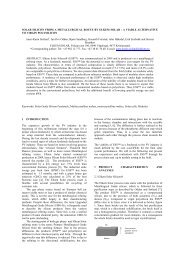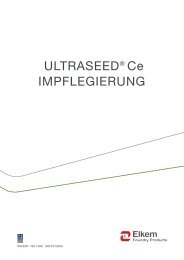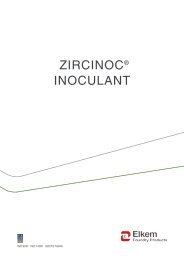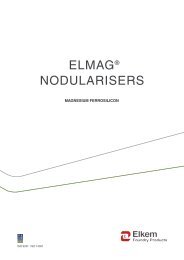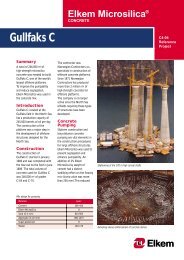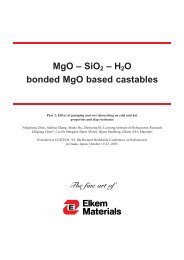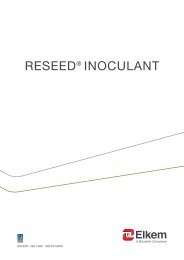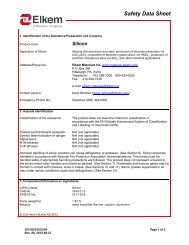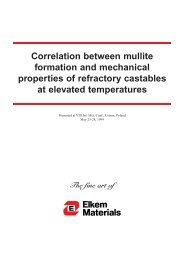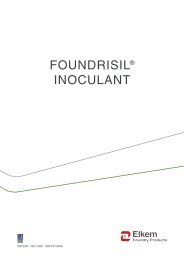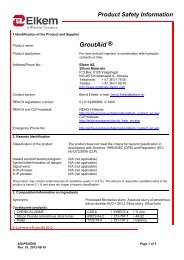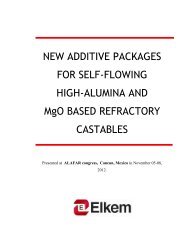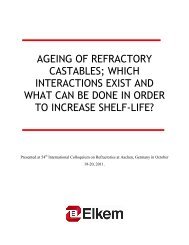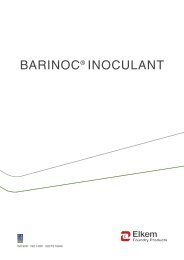The Use of Microsilica in Refractory Castables - Elkem
The Use of Microsilica in Refractory Castables - Elkem
The Use of Microsilica in Refractory Castables - Elkem
- No tags were found...
You also want an ePaper? Increase the reach of your titles
YUMPU automatically turns print PDFs into web optimized ePapers that Google loves.
dm: M<strong>in</strong>imum particle size <strong>of</strong> the distributionD: maximum particle sizeq: distribution coefficient (q-value)One important aspect when deal<strong>in</strong>g with particle size distributions is that they are always basedon volumes. So for mixtures <strong>of</strong> powders with different densities, the amounts always has to betransformed to volumes <strong>in</strong> order to give volume percents. <strong>The</strong> parameters <strong>of</strong> the Andreassenand the modified Andreassen equation are the same i.e. the q-value is identical for both. Oneimportant result presented by D<strong>in</strong>ger and Funk was the <strong>in</strong>fluence <strong>of</strong> the q-value on pack<strong>in</strong>g.By computer simulations they found that if the q-value was 0.37 or lower, then 100% pack<strong>in</strong>gdensity was possible for <strong>in</strong>f<strong>in</strong>ite distributions, while for q-values above 0.37, there is alwaysporosity 19 . So, to get dense pack<strong>in</strong>g, the q-value should not exceed 0.37. As a curiosity it maybe mentioned that Andreassen, <strong>in</strong> his orig<strong>in</strong>al paper from 1930 <strong>in</strong>dicated the q-value to havean optimum value somewhere between 1/3 and 1/2.<strong>The</strong> Furnas distribution has been much used <strong>in</strong> refractories. A common experience when us<strong>in</strong>gthis distribution on castables has been that flow is improved by add<strong>in</strong>g more <strong>of</strong> the f<strong>in</strong>estfraction. By add<strong>in</strong>g more <strong>of</strong> the superf<strong>in</strong>es, the downward curvature <strong>of</strong> the distribution isstraightened. Or put slightly different, add<strong>in</strong>g more superf<strong>in</strong>es changes the distribution from aFurnas type towards an Andreassen type. Thus <strong>in</strong> spite <strong>of</strong> the imperfections <strong>of</strong> the Andreassendistribution, it has been found that it works better for refractory castables than those <strong>of</strong> theFurnas type 20 on systems with microsilica.Results from systems based on the Andreassen equation have <strong>in</strong>dicated that <strong>in</strong> order to getgood flow for castables, the q-value should not exceed approximately 0.3. Model systemsbased on fused alum<strong>in</strong>a have shown13 that by manipulat<strong>in</strong>g the q-value <strong>in</strong> the range 0.2 to 0.3,one may <strong>in</strong>fluence the flow pattern <strong>of</strong> the castables. If relatively high q-values are used (i.e.close to 0.3) then the castables are vibratables, for lower q-values (



